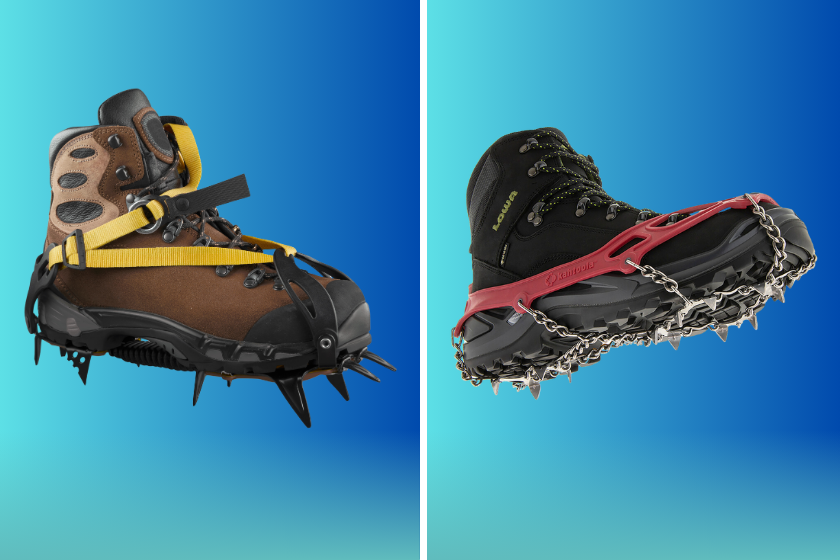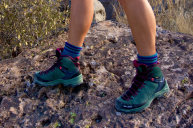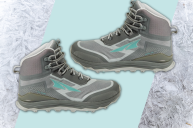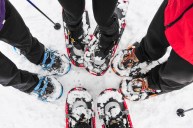In many parts of the United States, winter brings with it plenty of snow and ice—and with it slippery surfaces, everywhere from your driveway to your local hiking trails. Whether you're trying to get some winter hiking in or just go to the grocery store without falling in the icy parking lot, winter traction devices are invaluable in helping you get a little extra help getting a grip on the ground.
Winter traction devices come in two broad categories: crampons and microspikes. They come in a variety of makes and models, but most often have sharp spikes on the bottom that can sink into ice and snow, helping you stay upright in icy or snowy terrain. Best yet, they easily slip over or strap onto your winter boots, hiking boots, or running shoes, so you can truly pop them on any time traction might be in question.
I live in Alaska where winter starts as early as October and runs straight through April. Traction devices are an integral part of my winter gear, whether I'm heading out for a winter trail run, guiding clients at 17,000 feet on Denali, or just trying to dig my car out of the driveway. While traction devices can make winter a lot friendlier for anyone, they're also especially useful for anyone who is at risk of falling or seriously injuring themselves with a slip on a snow-covered driveway. I've had numerous shoulder surgeries over the past few winters, and traction devices practically lived on my feet during my recovery.
While they're similar, there are also big differences in crampons vs. microspikes. Here's how to choose which you need, and my top picks for each type of traction device.
Crampons vs. Microspikes: What's the Difference?
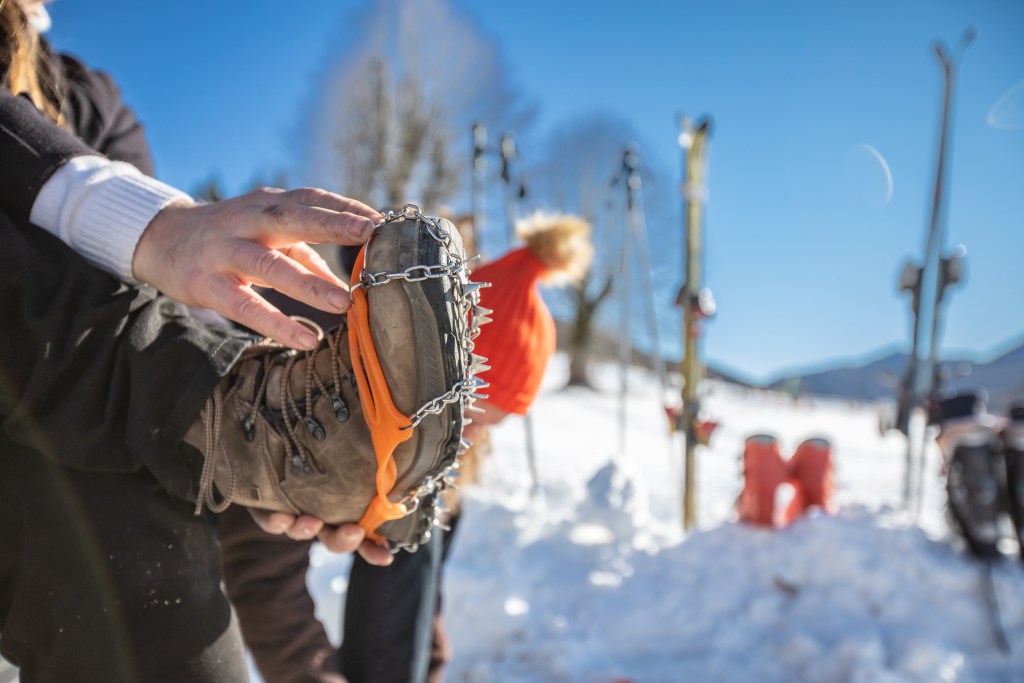
Getty Images, CasarsaGuru
Crampons and microspikes are both designed to give you better traction while walking on slippery surfaces like icy trails. They do, however, differ in design, construction, and the terrain they're best suited for.
Crampons are likely what come to mind when you think of technical mountaineering or ice climbing. They are robust, metal traction devices with numerous sharp points; strapping a pair on is a bit like strapping two dozen tiny knives to your feet. There are different types of crampons: Strap-on crampons can work with a variety of winter hiking boots, while hybrid and step-in crampons require specialized mountaineering boots with stiff soles and toe and heel welts. All crampons typically come in one size that is adjustable depending on the length of your boot.
Because they are so sturdy and specialized, crampons are generally heavier and more expensive than microspikes. With so many sharp points, using crampons can also be dangerous. I've had mountaineering clients trip and accidentally stab their calves with the points of their crampons. If you do choose to use them, make sure you walk carefully and with intention. Thankfully, crampons also aren't really needed for most winter applications. I break out my crampons only if I will be climbing steep, sustained icy slopes, frozen waterfalls, or spending a lot of time on bare ice traveling on a glacier.
Microspikes, like crampons, strap directly onto your boots. Microspikes are more lightweight and have shorter spikes that are less sharp than crampons but still sharp enough to bite the ice. Unlike crampons, which use metal and fabric to attach to your boots, microspikes are made of rubber and can be pulled over any boot or running shoe. They typically come in small, medium, or large; choose the size that will fit snugly without squishing your toes.
Because their spikes are shorter and you can't strap them down as tightly to your boots as you can with crampons; because of this, microspikes are not suitable for sustained, steep ice. Microspikes may be less aggressive than crampons, but they're far more versatile and excel on flat terrain, low-angle inclines, and moderately steep slopes. They can be used with running shoes, hiking boots, and winter boots, and are ideal for everything from shoveling your driveway to heading out on a winter hike. They're also known as ice cleats, studs, spikes, and snow grips.
In short, the difference between crampons vs. microspikes are:
Crampons:
- Sharper
- Heavier, but sturdier
- More expensive
- Sometimes require specialized footwear
- Better for technical winter terrain, like ice climbing or steep winter mountaineering
Microspikes:
- Lightweight
- Duller (but still effective) spikes
- Made of rubber
- Compatible with most any closed-toe shoe
- Better for everyday interactions with ice or less technical winter hikes
The Best Crampon Choices

Getty Images, aluxum
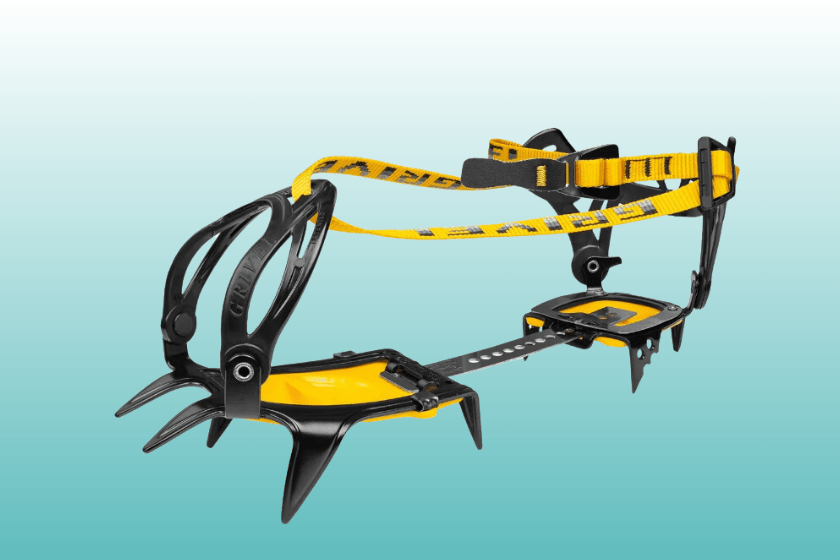
Wide Open Spaces
The Grivel G10 Evo crampons are the most aggressive traction device on our list with 10 sharp, steel points, including two front points to dig into steep, icy terrain. They have anti-balling plates under the toe and heel of the crampon to prevent wet, sticky snow from building up between the points. They also have a secure strap-on system for a tight fit over hiking or mountaineering boot (note: they won't work well with trail running shoes).
Because they are so burly (and heavy, at nearly 2 pounds), these crampons are overkill for most winter hikes. But if you'll be spending time on steep, sustained ice or technical terrain, they're a great pick with great security.
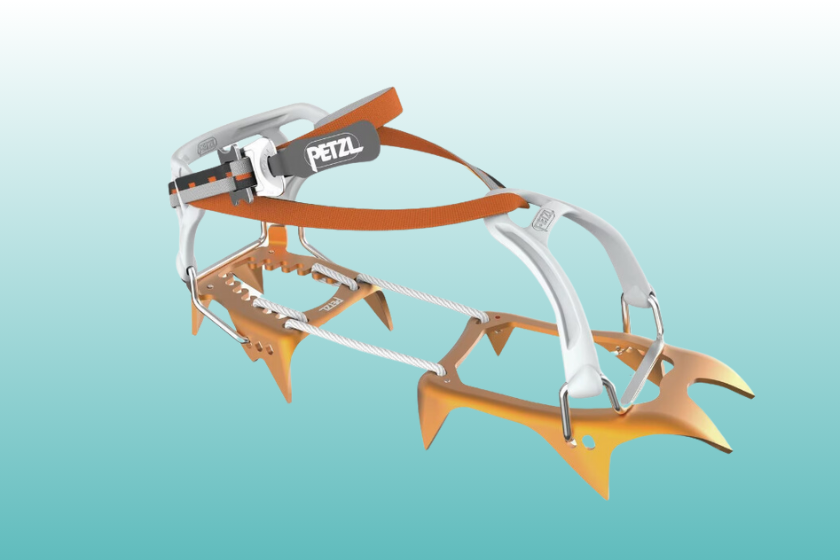
Wide Open Spaces
Petzl Leopard crampons, like the Grivels, have 10 points. But uniquely, the Petzl Leopards are ultra-lightweight crampons at just 13 ounces. Petzl achieves this by using aluminum rather than steel for the points, and a cord instead of a metal bar to connect the front and rear portions of the crampons.
Because they aren't rigid, you can fold the Leopards in half and pack them up into a tiny bag. This lightweight packability makes them ideal for winter backpacking or hikes where you're not quite sure if you'll need crampons, but if you do, microspikes aren't going to cut it.
However, because aluminum is a softer metal and the cord isn't as rigid as a metal bar, the Leopards aren't as suitable as the Grivels for sustained, steep icy terrain.

Wide Open Spaces
The Hillsound Trail Crampon Pro blends the line between crampons and microspikes and is great for winter backpackers and hikers. It has 11 sharp, steel points for traction and anti-balling plates to prevent snow from building up between the points.
They use a ratchet binding system to give you a secure, tight fit on any hiking or winter boot. The points are shorter and the binding system less secure than true, technical crampons, which means the Hillsounds aren't the best choice for sustained, steep ice like the Grivels.
(Pro tip: If you prefer using trail runners, check out the Hillsound Trail Crampon. They look a lot like microspikes but have much longer points and a strap over the toe for a more secure fit.)
Best Microspike Choices
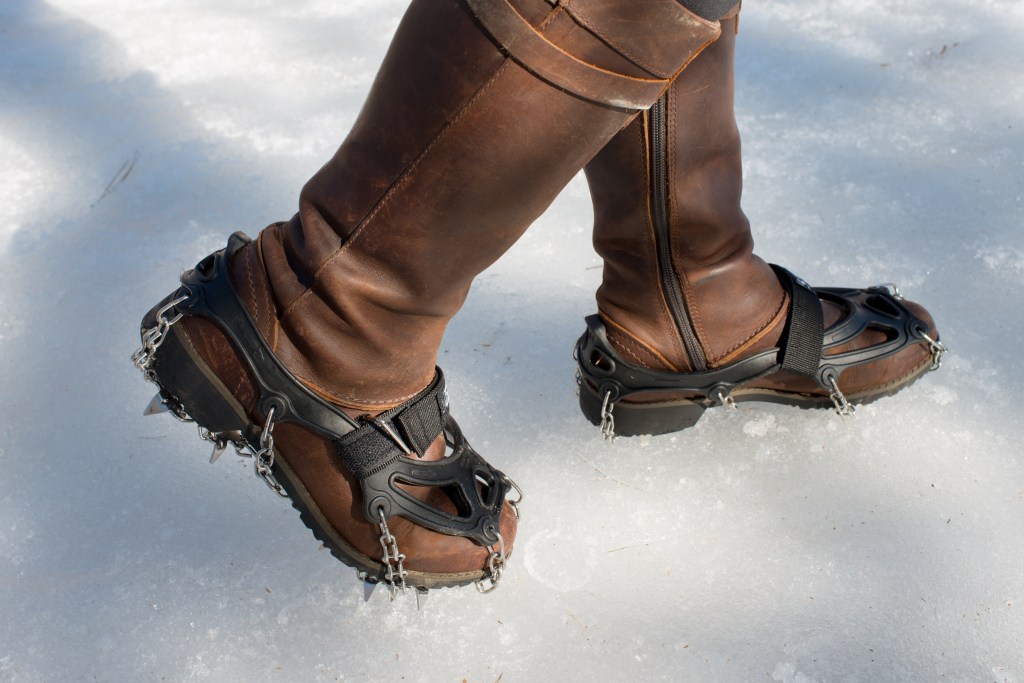
Getty Images, Jun Zhang
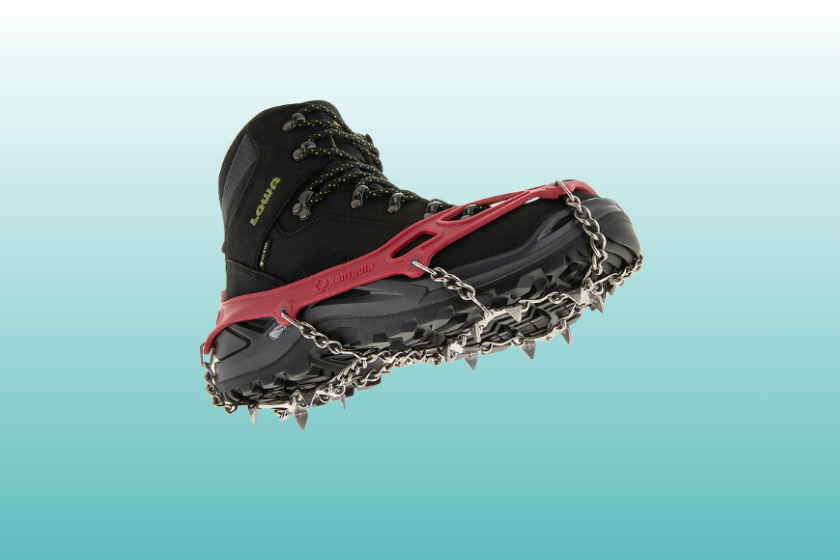
Wide Open Spaces
Kahtoolas are one of the most popular microspikes and are my top pick for the best hiking microspikes. They are durable and have aggressive traction with 12 hardened stainless steel spikes per foot, and are one of the cheaper options on the market without sacrificing traction.
My Kahtoola Microspikes live in my truck year-round in Alaska and are perfect for getting the mail after a snowstorm, heading out for a snowy trail run, going winter backpacking, or reaching the summit of those peaks that still don't quite lose all their snow in early summer.
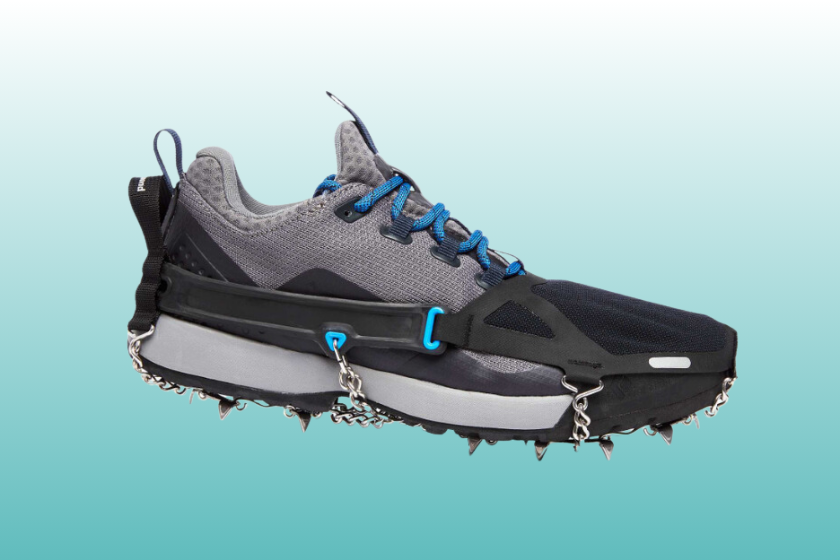
Wide Open Spaces
While you can use Kahtoolas for winter trail running, if you log a lot of miles on icy ground, you may want something specially designed for the job: The Black Diamond Distance Spike Traction Device is only 8 ounces (3 ounces lighter than Kahtoola Microspikes) and has 14 spikes per foot, giving you increased traction when you're moving quickly.
They're made with a thin, neoprene top that covers your shoe's toe, adding a layer of waterproofing and wind protection that is especially welcome on thin, breathable running shoes.
Though they have more spikes, the points are also a little shorter than other models, so if you're venturing into steep, icy terrain, I recommend swapping to your Kahtoolas.
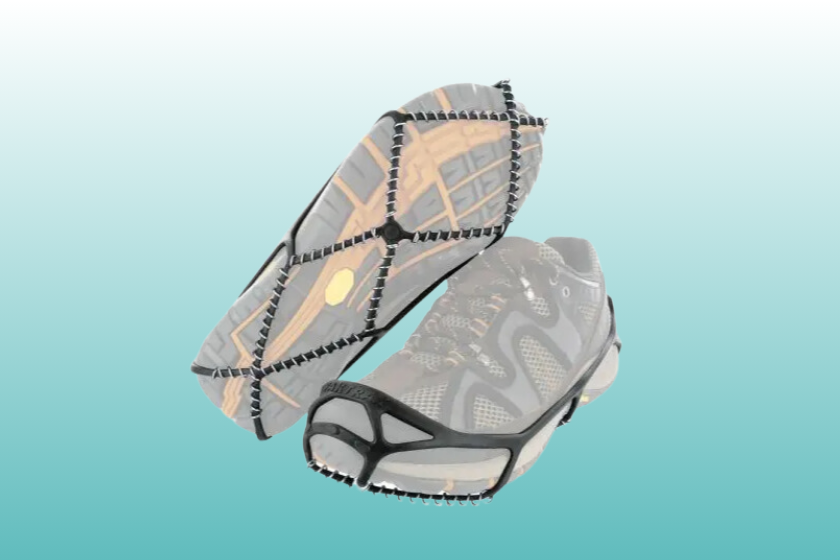
Wide Open Spaces
YakTrax is practically a household name when it comes to winter traction devices, and their YaxTrax Walk Traction Device is the perfect choice for urban outings.
Unlike other microspikes, YaxTrax doesn't use small spikes. Instead, steel coils nestle against the sole of your shoe and provide extra grip on slick ground. Because this device isn't physically penetrating the snow-like spikes, they don't offer nearly as much traction as the Kahtoola Microspikes.
This also means that you can wear them indoors without getting too many looks for taking chunks out of the linoleum. I like YakTrax Walk Traction Devices for shopping days, when I'll be in and out of stores frequently and don't want the hassle of taking my microspikes on and off. They aren't suitable for steep terrain or deep snow.
What About Snowshoes?
While crampons and microspikes are perfect for ice and packed snow, if you are traveling on trails that have just gotten several inches or more of fresh snow, you'll want floatation devices like snowshoes to keep you on top of the snow.
Snowshoes have spikes on the bottoms much like crampons and microspikes, but their massive surface area will keep you from post-holing through the snow, saving you time and energy.
